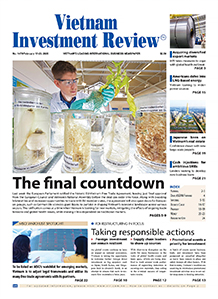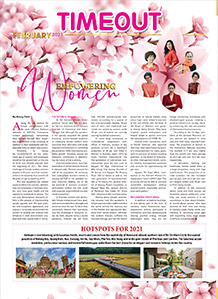Standardisation to aid industries in high-speed rail
In preparation for Vietnam’s ambitious North-South high-speed railway project, expected to break ground by the end of 2026, calls are growing for the government to rapidly issue technical standards, finalise core technology choices, and demonstrate clear commitment to sourcing from local industries.
 |
| Le Net, Partner, LNT & Partners |
Stakeholders emphasise that in order for Vietnamese companies such as Vietnam Railways, Hoa Phat, Vingroup, Truong Hai, and others to participate meaningfully in supplying materials and equipment for the venture, the government must urgently provide a clear framework for technical requirements, approved technologies, and priority procurement policies.
Without these critical decisions, domestic enterprises will not be able to plan investments, establish manufacturing lines, or secure necessary certifications in time to contribute to the project. It is an urgent need to have standards and technological direction.
The high-speed rail initiative requires a sophisticated array of high-precision materials and components far beyond those used in conventional railway systems.
Local companies intending to supply rails, track systems, signalling equipment, and rolling stock components need at least 12-18 months to invest in new technologies, expand production capacity, and meet international quality benchmarks.
However, as of mid-2025, national technical standards, regulatory frameworks, and the list of prioritised goods have yet to be finalised. Companies are concerned that unless these standards are issued as soon as possible, they will not have sufficient time to complete necessary investments before the bidding phase commences around September 2026.
Further complicating matters, the railway’s feasibility study is scheduled for completion only by September 2026, creating a significant timing mismatch between supplier investment cycles and procurement timelines.
In light of these challenges, stakeholders propose several urgent actions. First is accelerating the issuance of technical standards. The government should immediately publish the key technical standards governing all major components of the high-speed railway, including track structures, rail grades, electrical systems, and safety protocols.
These standards must align with international best practices but also allow local adaptation to Vietnam’s operational and environmental conditions.
Second is early commitment to technology choices. Core technological parameters, such as the maximum operational speed, train control systems, and rolling stock specifications, must be finalised as early as possible. Clear technological direction will enable local companies to align their decisions with the railway’s requirements.
The third aspect is priority procurement for local industries. The government should establish policies that prioritise or reserve certain categories of supply for qualified domestic manufacturers. Measures could include local content requirements, preferential bidding policies, and targeted public procurement strategies.
Fourth is investment incentives. To encourage timely investment in new production lines and technologies, the government should offer tax incentives, import duty exemptions for specialised equipment, and preferential land leasing terms for strategic suppliers.
The fifth factor is risk-sharing mechanisms. Recognising the risks faced by early investors, stakeholders propose that the government consider partial cost compensation mechanisms or advance purchase commitments if project timelines shift significantly beyond planned schedules.
There is a strategic opportunity for Vietnam’s industrialisation. Industry representatives stress that the North-South high-speed railway is not merely a transportation undertaking, but a national industrial opportunity. If properly harnessed, it could catalyse the development of a high-value domestic railway supply chain, create skilled jobs, and reduce Vietnam’s future dependence on foreign suppliers.
Missing this opportunity, they warn, could lock Vietnam into long-term reliance on imported materials and technologies, losing valuable chances for technology transfer, localisation, and industrial upgrading.
To capture potential opportunities, decisive action is needed. With the clock ticking, stakeholders urge the prime minister and relevant ministries to prioritise and expedite all regulatory and technological decisions necessary to enable local companies to invest confidently and participate competitively.
Only with early, strong, and clear government action can Vietnam maximise both the economic and strategic benefits of its high-speed railway ambitions.
 | VinSpeed registers to invest in North-South high-speed railway VinSpeed High-Speed Rail Investment and Development JSC has registered interest in investing in the North–South high-speed railway, which is expected to be completed by 2030. |
What the stars mean:
★ Poor ★ ★ Promising ★★★ Good ★★★★ Very good ★★★★★ Exceptional
Related Contents
Latest News
More News
- Real estate market can ride off back of resolution’s vision (June 04, 2025 | 10:06)
- Updates to clarify state capital funding rules (May 30, 2025 | 10:50)
- Private entities urged to play more crucial role (May 30, 2025 | 10:00)
- What is the correct answer to tackle counterfeit drug sales? (May 30, 2025 | 08:53)
- Private sector policy shifts can mean a market lift (May 28, 2025 | 15:37)
- Legislatory shift can support recovery of bad debts (May 28, 2025 | 14:56)
- Commitments made to transparency and innovation (May 26, 2025 | 09:48)
- Resolution 68 is a new dawn for Vietnam’s private sector (May 21, 2025 | 13:00)
- Private sector evolution sets long-term foundation (May 21, 2025 | 11:00)
- Pivotal turning point arrives for nation’s private sector (May 21, 2025 | 10:00)

 Tag:
Tag:


















 Mobile Version
Mobile Version